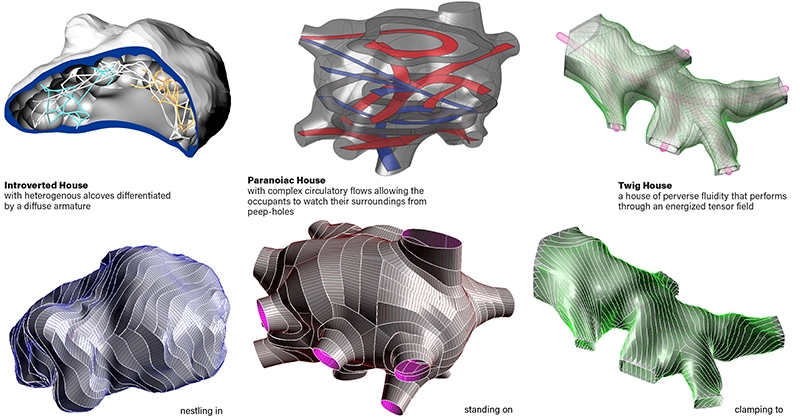Intellectual Algorithmic Property
Princeton University Thesis Project
Software: Rhino with EvoluteTools and Grasshopper, Processing
Advisors: Elizabeth Diller and Axel Kilian
This print graphic was installed for presentation in the main gallery at Princeton University School of Architecture. Satin bond paper. 64 inches by 144 inches.

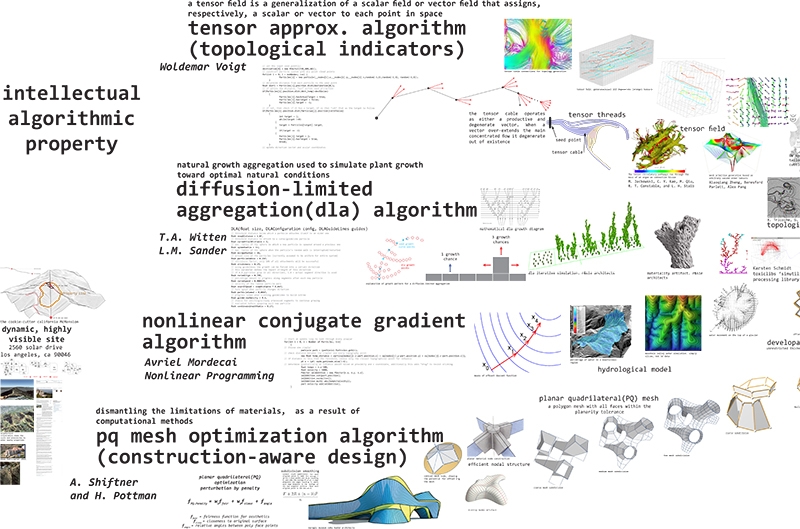
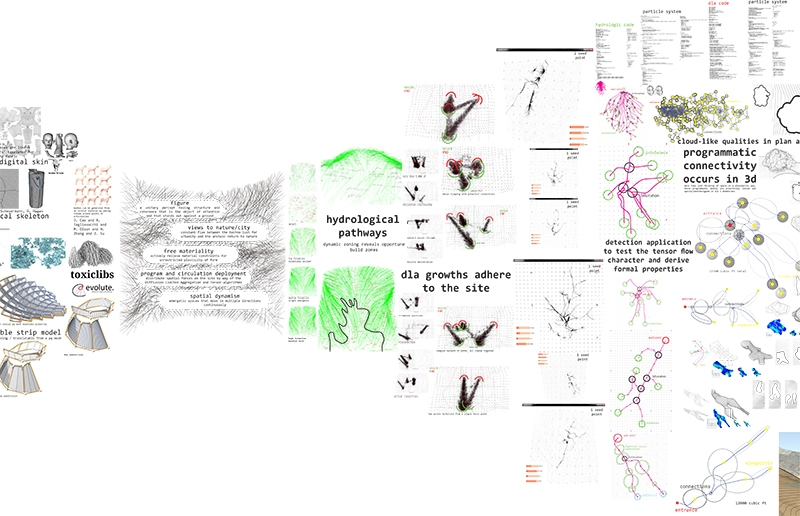
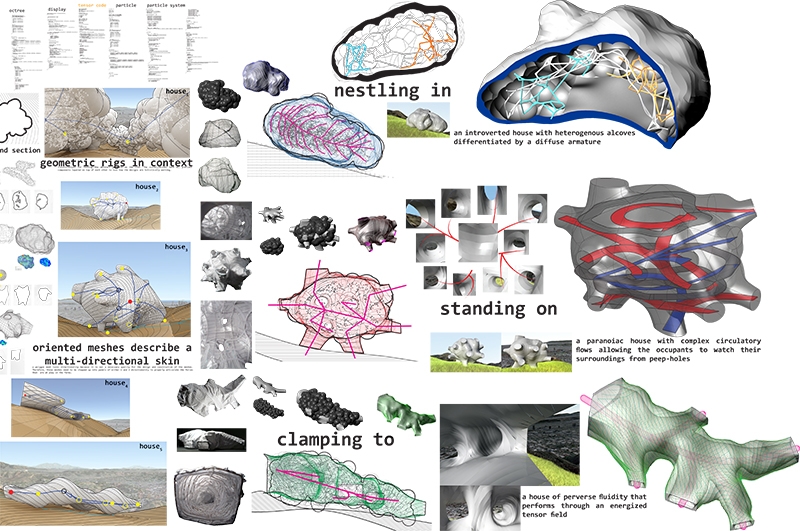
Also see: Princeton University SoA Thesis - Devin Jernigan
The algorithms were selected for their architectural capabilities:
Identify the area suitable for building, based on slope analysis by applying the non-linear conjugate gradient algorithm.
Algorithm by Avriel Mordecai
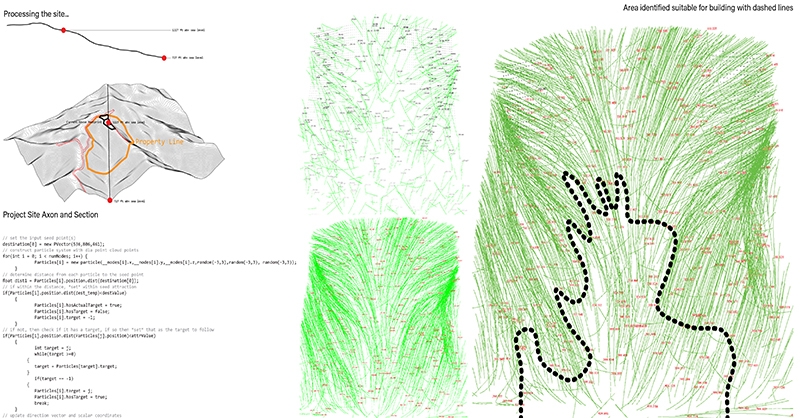
Fill out the area in 3D with point cloud by applying the diffusion-limited aggregation (DLA) algorithm.
Algorithm by T.A. Witten and L.M. Sander
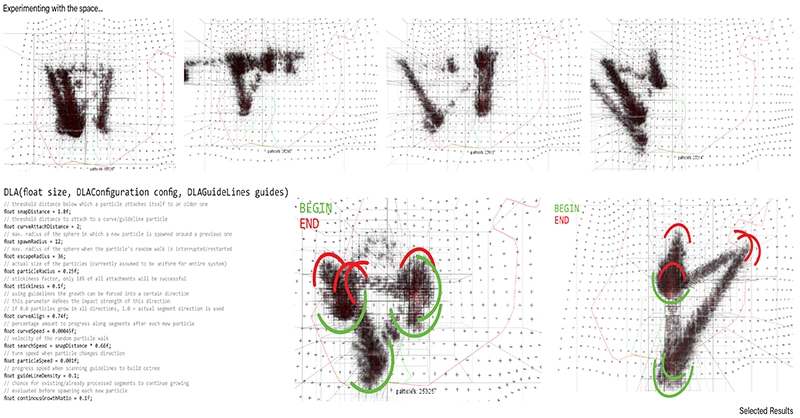
Finding the circulation path, based on the core of the point cloud by applying the Tensor approximation algorithm.
Algorithm by Woldemar Voigt
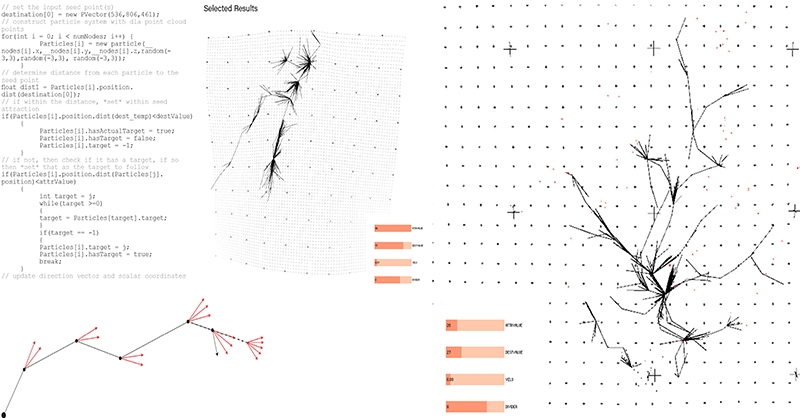
Generating the shape of the building, based on the point cloud, and simplifying mesh faces by applying the Planar-quadrilateral mesh optimization algorithm to flatten mesh faces and closely approximate their original position.
Algorithm by A. Shiftner and H. Pottman
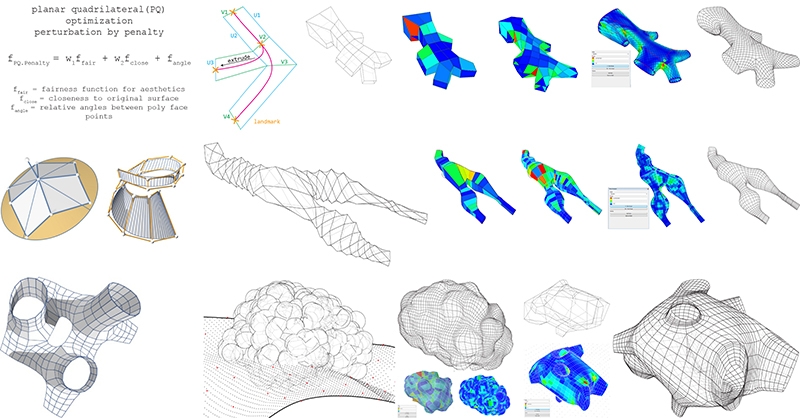
Bringing all of the design narrative together into prototypes for houses. These geometric rigs are something more than just digital clay and are becoming narrative beings that can have a life of their own. There is now a required (architectural) visual reading because these houses have gone beyond what the designer had in mind.
Are we using algorithms to assist the design process, or are we handing over the design process to the algorithm?
Presentation Graphic
This print graphic was installed for presentation in the main gallery at Princeton University School of Architecture. Satin bond paper. 64 inches by 144 inches.

Close Ups



Also see: Princeton University SoA Thesis - Devin Jernigan
The Architectural conditions + The Algorithms
The algorithms were selected for their architectural capabilities:
- to analyze the topography and understand the site
- to create space on the site
- to describe the movement patterns in this new space
- to develop buildable surfaces around the space
- . . .with more architectural capabilities were added along the way.
Site
Identify the area suitable for building, based on slope analysis by applying the non-linear conjugate gradient algorithm.
Algorithm by Avriel Mordecai

Space
Fill out the area in 3D with point cloud by applying the diffusion-limited aggregation (DLA) algorithm.
Algorithm by T.A. Witten and L.M. Sander

Circulation
Finding the circulation path, based on the core of the point cloud by applying the Tensor approximation algorithm.
Algorithm by Woldemar Voigt

Form
Generating the shape of the building, based on the point cloud, and simplifying mesh faces by applying the Planar-quadrilateral mesh optimization algorithm to flatten mesh faces and closely approximate their original position.
Algorithm by A. Shiftner and H. Pottman

House Prototypes
Bringing all of the design narrative together into prototypes for houses. These geometric rigs are something more than just digital clay and are becoming narrative beings that can have a life of their own. There is now a required (architectural) visual reading because these houses have gone beyond what the designer had in mind.
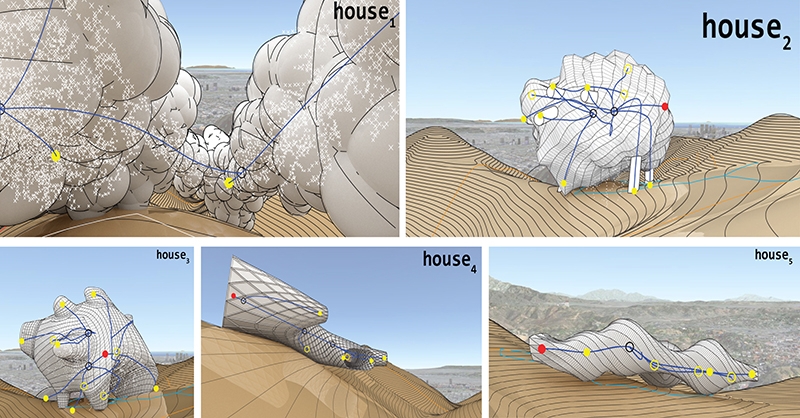
House Characters
